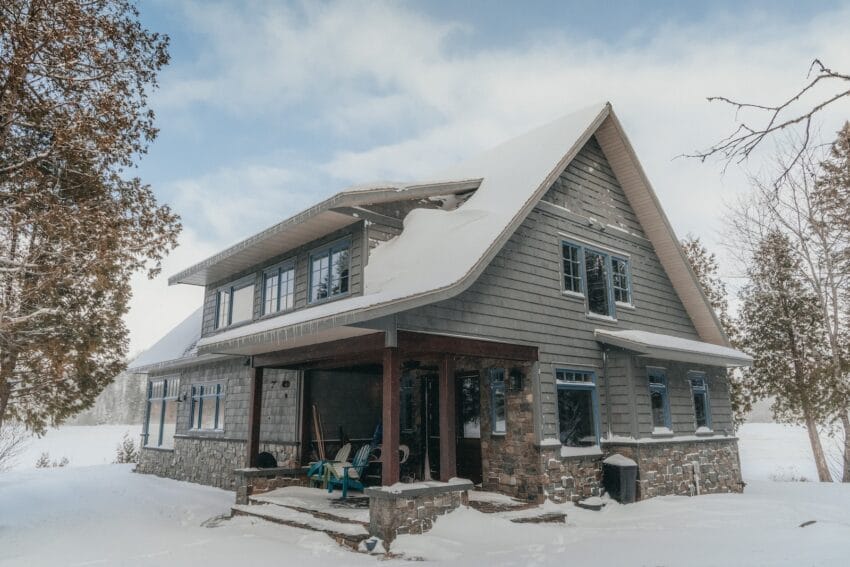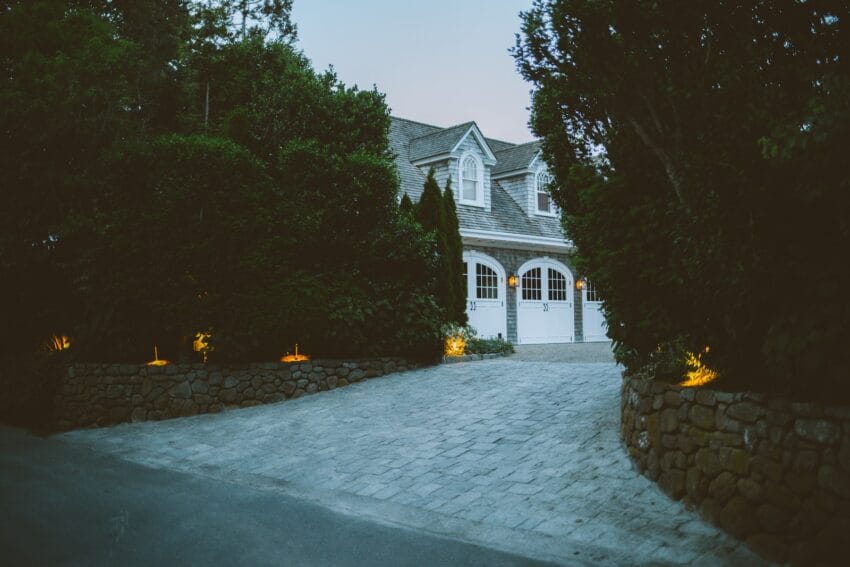While sometimes it’s nice to have bad weather like a snowstorm that keeps you curled up inside with a roaring fire and a good book, for the most part, it’s pretty nice. Even when it comes to things like thunderstorms, they can be pretty relaxing, as long as you’re getting to stay at home, of course. But with that said, while bad weather can be pretty nice from time to time, this can eventually wear down on your house.

As you most likely know, bad weather has a way of affecting cars and outdoor furniture, but it’s the exact same for your house, too. Just as hail from a bad thunderstorm can dent your car and crack your car windows, it can have just as much of an effect on your house exterior and interior, too. Of course, everyone wants to have a safe home, and when it comes to the safety in your home, it means taking everything into account, and that includes the weather. So, here’s exactly what you need to know when it comes to the long-term effects that bad weather has on your house.
Roofing Issues
So, one thing you need to keep in mind is the fact that your roof is your first line of defense against the elements, and it often bears the brunt of bad weather. Whether it’s heat, rain, snow, ice, you name it, you can expect roofing issues to eventually happen. In general, over time, constant exposure to rain, snow, and hail can lead to roof damage. Shingles may become loose or missing, and leaks can develop. The result? Costly repairs and potential water damage to the interior of your home. One thing you need to keep in mind is the fact that roofs need to be repaired and even replaced every 15 to 20 years, depending on the material and quality.
Hiring a professional roofing company is not only going to help you save money in the long run by having regular checkups with your roof but in general, you’ll be keeping your whole house safe and the structural integrity in general, too. Cleaning gutters, replacing damaged shingles, and ensuring proper ventilation can extend your roof’s lifespan. Something that, ideally, you get professionals to do and help you out with. Roofing issues are one of the biggest things because your whole house can get destroyed by a bad roof, meaning you can expect mold growth, poor structure, poor insulation, damage to electrical wiring, and so on.

Siding and Paint Problems
It’s not only about the roof, but the second line of defense when it comes to bad weather is the siding of your house. Paint and siding aren’t only used for making a house look aesthetically pleasing; in fact, that’s only one of the benefits that siding (and certain paints) have. Most exterior paints act as a waterproofer, so a sealant to help keep moisture from getting into the house. As for the siding, it’s meant to protect the structural integrity of the house, such as preventing moisture from getting in.
So, how do house siding and paint issues happen for houses when it comes to bath weather? Well, just like the roof, these are both constantly exposed to the elements 24/7. So, in general, these both are susceptible to fading and damage from harsh weather conditions.
Just think about it; extreme heat and UV rays can cause paint to peel and blister, while heavy rain and moisture can lead to rot and mold growth on wooden surfaces. Honestly, the only way to prevent any potential damage is just by having regular check-ups. Be sure to just regularly inspect your home’s siding and paint, and consider investing in weather-resistant materials or paint that can withstand the elements for longer periods.
Water Intrusion
For the average homeowner they know there’s a problem with their roof the second they see a leak or stains on the ceiling. This is known as water intrusion, and it’s a pretty huge sign that water managed to seep in due to the bad weather and the wear and tear that the house has. When you see water intrusion, then you need to know that things are really bad with your house, and they’re only going to get worse if this isn’t taken care of ASAP. You can basically expect these three things:
- Rot and structural damage from prolonged moisture exposure
- Mold and mildew growth, which can negatively impact indoor air quality and health
- Degradation of materials like drywall and insulation
These are not only bad for the house, costing thousands upon thousands in repair, but in general, it’s just not going to be safe to live in. In the end, it’s not just about roof repair, but in order to prevent moisture-related damage, you’ll need to maintain your home’s waterproofing systems, repair leaks promptly, and ensure proper ventilation and dehumidification in moisture-prone areas. Sure, it can be a lot of work, but it’s so important to do if you want to avoid long-term damage to your house.
Damage to Foundation
Have you ever seen old houses that were leaning a little bit? This goes for the Leaning Tower of Pisa, too. While the view of it is interesting, this is actually a pretty bad thing for buildings and houses. Rainwater and melting snow can infiltrate the soil around your home, causing it to expand and contract. This constant pressure can lead to foundation cracks over time.
These cracks can compromise the structural integrity of your home, resulting in expensive repairs and potentially even long-term damage. No matter where you live, it helps to get a foundation report of your home because you never know how the foundation is. But can you potentially prevent foundation damage? To a degree, yes, it’s all about ensuring proper drainage around your home, keeping gutters clean, and maybe even considering installing a sump pump to manage excess moisture.

Poor Landscaping
Did you know that the landscaping around your home plays a crucial role in preventing long-term weather-related damage? When it comes to a nice lawn, it’s not always about aesthetics, but functionality for the house is just as important. So it’s not only about the foundation itself but the landscaping and the drainage system within your lawn, too.
Poorly graded lawns can allow water to pool near your foundation, increasing the risk of flooding and structural damage (like what was stated above). You absolutely need to ensure your lawn has proper drainage, and even maintaining landscaping can help protect your home, too, for the long term.
Issues with Windows and Doors
If you’ve been around old houses or houses that were poorly maintained, then you might have noticed that window sills are cracked wood chippings, and the same can be said for doors, too. The framing around both of these eventually gets destroyed. So while it’s true that windows and doors protect the inside of your house from bad weather, eventually, it can also take a toll on them too.
Constant exposure to rain, wind, and temperature fluctuations can lead to seal failures, drafts, and higher energy bills. One of the few ways to really prevent any long-term damage to either of these is just weatherstripping and regular maintenance. Both of these can help preserve the integrity of these openings.
Eroding of Exterior Surfaces
So earlier in the article, it was mentioned that paint on the exterior of a house can get damaged due to bad weather, but it’s not the only exterior part that can get destroyed that protects the house. Log cabins, stone houses, and even brick homes aren’t entirely safe from the effects of bad weather.
In general, when it comes to exterior surfaces, including siding, paint, and masonry, whatever is the first line of defense against bad weather can indeed get destroyed in the long run. Over time, exposure to the elements can lead to things like peeling and fading such as due to heat and UV, warping, rotting, and cracks in things like bricks. At the end of the day, when it comes to your home and keeping it safe, it’s really all about regular inspections and hiring professionals to do a check-up on your home, and that includes the exterior surfaces of your house, too.
Pest Infestation
Cracks and gaps in homes are entry points for pests such as bugs and rodents. Long-term effects of bad weather usually lead to cracks and gaps in the home over time. Be sure to seal these areas and consider professional pest control if necessary. Not only are pests likely to destroy your home, but they’re unsafe for you and your family too.
Mold and Mildew
During prolonged months of rain and moisture, mold is likely to build up. It’s even pretty common for older houses to deal with this during the autumn, winter, and early spring months. But in general, excess moisture, often a result of bad weather, can create ideal conditions for mold and mildew growth within your home. As you already know, mold and mildew can have detrimental effects on indoor air quality and your family’s health.


